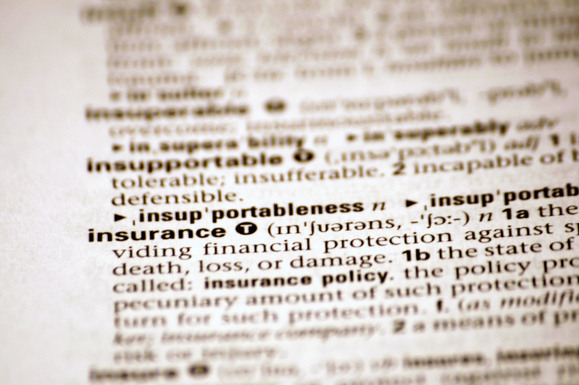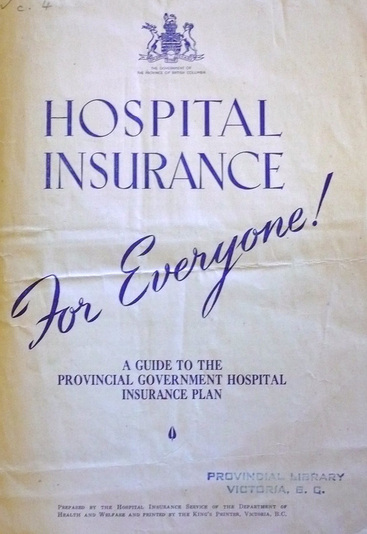When a person becomes disabled and unable to work, at some point their income will stop. It might be sooner or later, but unfortunately, life goes on and daily living expenses continue to
mount.
Disability income insurance is available to continue at least a portion of ones income while unable to work. It’s sad, but most people give more attention to life insurance than they do about income replacement should they become disabled.
Disability income insurance is available individually or sometimes as a portion of a group benefit provided by an employer in their group package.
Individual policies are most often sold to self-employed and professional people. The amount of the benefit relates to earnings and is matched as close to after tax income as possible. Generally it is up to 60% of monthly net income and there is usually a cap on the amount.
When included as part of a employee group benefit package, disability income policies are usually more liberal than individual plans as far as limitations and exclusions. It is also much easier to acquire coverage. As a general rule, group plans are much less costly to all
parties.
Disability income protection should be an element of your entire financial planning. The importance cannot be overestimated because it relates to your overall family finances. Whatever you situation may be, disability is one of the most important factors when you consider you inability to work and produce income.
Some things to consider when determining disability income needs are:
- Establish the bare minimum required if income stops.
- Determine your retirement needs if work ceases and the ability to pay into the retirement ends.
- Allow for any benefit that might be offset by social security and workers compensation.
Some thought needs to be afforded to the possibility of “total disability.” That definition is important as it is always defined in a policy and different companies may use different definitions.
Interpretation is important as it pertains to the insured’s own occupation and any occupation the insured may be qualified to perform.
The first method used to determine total disability concerns the occupation that the insured is normally engaged in. In this case total disability might be defined as “the insured’s inability to perform any or all of the duties or his or her own occupation.” This is determined by the insured’s occupation at the time that disability begins.
The second method is more restrictive defined as “the insured’s inability to perform the duties of any occupation for which he or she is reasonably qualified by education, training or experience.”
In other words, while you may no longer be able to conduct the duties of your current occupation you may be able to perform activities in a related field.
There are some disability income policies that use another criterion to classify total disability. This is called presumptive disability and automatically qualifies the insured for total disability classification.
These conditions are:
- Loss of use of any two limbs
- Total and permanent blindness
- Loss of speech and hearing
Usually short-term policies cover non-occupational disability but most long-term policies cover both occupational and non-occupational sickness and accidents. Bear in mind, however, that occupational benefits are usually reduced by benefits received form workers
compensation and social security.
Other considerations are the probationary period, elimination period and the benefit period.
Some disability policies use a probationary period that begins when a policy goes into effect and no benefits are paid during this period. It varies but is often 15 or 30 days and sometimes up to 60 days for long-term policies.
In addition to the probationary period some policies also include an elimination period. It begins when the policy goes into effect and can last for any length of time even up to a full year. This is usually left to the insured to decide as it is based on how long the insured can
go without income after becoming disabled.
The primary advantage to a long probationary period is a low premium and allows the insured to use premium dollars to purchase a benefit that best suits their needs.
The benefit period, which is the length of time, can vary depending on the needs of the insured. They can be as short-term as 13 weeks up to long-term as long as age 65.
As a general rule the longer the benefit period, the higher the premium. Same as everything in life, we get what we pay for.
Benefit amounts for both short-term and long-term policies range from 50% to 66 2/3% of earnings with a cap on the maximum amount to be paid.
Other disability categories are confining vs. non-confining, partial, residual, recurrent, delayed, combined accident and sickness and non-disabling.
We won’t cover definitions of each category here, but do be aware of their existence and check your policy for a definition of coverage for these types of disability.
Most companies offer optional short-term benefits for an additional cost. A typical disability income policy might include all, some or none of the items below so it is important to discuss these with your agent. These options are:
- Supplemental income – sometimes called an additional monthly benefit rider, provides additional income during the first several months of a long-term disability.
- Hospital income – pays a stipulated amount per day when hospitalized extending for a certain period and can be up to 12 months.
- Elective benefits or indemnities – provides lump-sum payments for certain injuries like fractures, dislocations, sprains or amputations of toes or fingers and is elected by the insured in lieu of weekly or monthly benefits stated in a contract.



 RSS Feed
RSS Feed